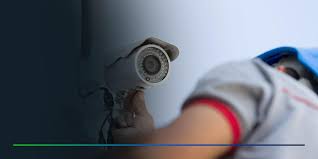In an increasingly interconnected world, home security systems installers have become a ubiquitous presence, playing a crucial role in safeguarding homes, businesses, and public spaces. These devices, once primarily associated with large institutions and government facilities, are now accessible to everyday consumers, revolutionizing how we monitor and protect our surroundings.
The Evolution of Technology
Security cameras have undergone a remarkable evolution from their early analog days to today’s sophisticated digital systems. Analog cameras, with their grainy images and limited functionality, have been largely replaced by digital cameras offering high-definition video quality, remote access, and advanced features such as night vision, motion detection, and even facial recognition.
The advent of Internet Protocol (IP) cameras has been particularly transformative. These cameras can connect directly to the internet, enabling real-time streaming of footage to smartphones, tablets, or computers anywhere in the world. This capability enhances monitoring capabilities and allows for immediate response to potential security threats.
Applications in Various Settings
The applications of security cameras are vast and diverse. In residential settings, homeowners use them to deter burglaries, monitor deliveries, and keep an eye on children or pets. Businesses employ them to protect assets, monitor employee activities, and ensure compliance with safety protocols. Public spaces utilize cameras for crime prevention, traffic monitoring, and emergency response coordination.
Advanced Features and Capabilities
Modern security cameras come equipped with a range of features designed to enhance functionality and ease of use:
- High-Definition Video: Crystal-clear video quality ensures that every detail is captured accurately, making it easier to identify individuals and events.
- Remote Monitoring: Access cameras from anywhere with an internet connection, providing peace of mind and the ability to respond promptly to any suspicious activity.
- Motion Detection and Alerts: Cameras can detect motion and send alerts to notify users of potential intrusions or unusual activity, minimizing response time and improving security.
- Night Vision: Infrared technology enables cameras to capture clear footage even in low-light or nighttime conditions, extending surveillance capabilities around the clock.
- Two-Way Audio: Some cameras feature built-in microphones and speakers, facilitating communication between individuals on-site and remote viewers.
- Cloud Storage: Store footage securely in the cloud, ensuring that critical evidence is preserved even if the camera is damaged or stolen.
- Artificial Intelligence: AI-powered cameras can analyze footage in real-time, distinguishing between humans, animals, and vehicles, and triggering alerts accordingly.
Privacy and Ethical Considerations
While security cameras offer undeniable benefits, their proliferation raises important privacy concerns. The use of facial recognition technology, for example, sparks debates about surveillance overreach and individual rights. Regulations and guidelines are crucial to balancing security needs with privacy protections, ensuring that camera deployments are both effective and respectful of civil liberties.
Future Trends
Looking ahead, the future of security cameras appears promising. Innovations in AI and machine learning will likely lead to even smarter cameras capable of autonomous decision-making and predictive analytics. Integration with smart home systems and IoT devices will further enhance convenience and functionality, creating seamless, interconnected security ecosystems.
Conclusion
Security cameras have evolved from simple surveillance tools to sophisticated devices that empower individuals and organizations to protect what matters most. As technology continues to advance, these devices will play an increasingly pivotal role in ensuring safety and security across various domains. However, it is essential to navigate the ethical and privacy challenges posed by their widespread adoption, ensuring that security remains a force for good in our increasingly connected world.

